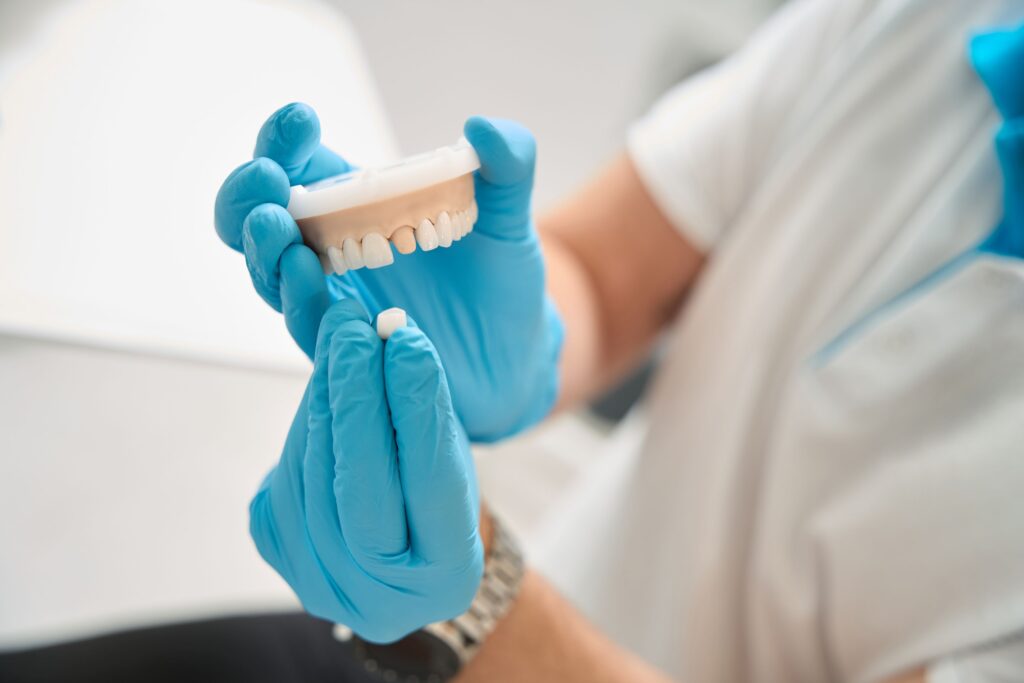
Dental crowns are a versatile solution that can serve different functions to protect and restore your smile. For instance, they can protect a decayed or damaged tooth or one that underwent a root canal, anchor a dental bridge to close the gap in your grin, or cap an implant so you can eat and speak more normally after tooth loss.
However, you might avoid scheduling this common procedure if you’re worried it might hurt. Continue reading to learn about what it’s like to get a dental crown so you can set your concerns aside!
Step #1: Examination & Numbing
Before you can be fitted with one of these restorations, you must schedule a consultation with your dentist to verify it’s the best solution to meet your unique needs. They’ll examine your teeth and gums and may take X-rays or other images to create a comprehensive picture of your oral health. If they find any cavities or gum disease, they will need to address those before proceeding.
Then, once they’ve determined a dental crown is right for you, they’ll numb your mouth with a local anesthetic to prevent potentially adverse sensations. If you’re overly anxious, have a strong gag reflex, struggle to sit still, or have other concerns about your procedure, they might also suggest free nitrous oxide sedation or some other medication to help you feel calm and comfortable the entire time.
Step #2: Preparation & Impressions
Dental crowns are caps made from tooth-colored ceramic customized to match your natural teeth. However, your dentist must remove a small amount of enamel from the underlying pearly white to ensure it can fit correctly without causing a bite misalignment or appearing overly bulky.
Once these preparations are complete, your provider will make impressions and take images or scans of your teeth and gums to design a lifelike restoration that fits like a glove. This information is sent to a special dental laboratory to begin building your new tooth.
Step #3: Temporary Crown Placement
Your tooth is somewhat more vulnerable to damage and decay once the enamel has been thinned, but it can take a couple of weeks for the lab to deliver your crown. Your dentist will likely want to place a temporary crown over your pearly white to shield it from harm in the meantime. This isn’t intended to last long, so you should avoid eating anything overly hard, crunchy, sticky, or sugary that could injure it.
Then, once your dentist receives the finished crown, they’ll schedule you for a final fitting and cement it over your tooth for a beautifully restored smile!
About the Practice
Patients at 21st Century Dental of Irving benefit from a team of dentists dedicated to helping people improve their lives by enhancing their oral health. Dr. Roy, Dr. Bristow, and Dr. Kumar share decades of combined experience and collaborate to provide a comprehensive menu of services conveniently under one roof. Whether you need a routine checkup or to repair a damaged tooth with a dental crown, they have the expertise and state-of-the-art technology to help. Plus, they offer multiple types of sedation to help you feel at ease regardless of the reason for your visit. You can request an appointment on the website or call (972) 255-3712.
